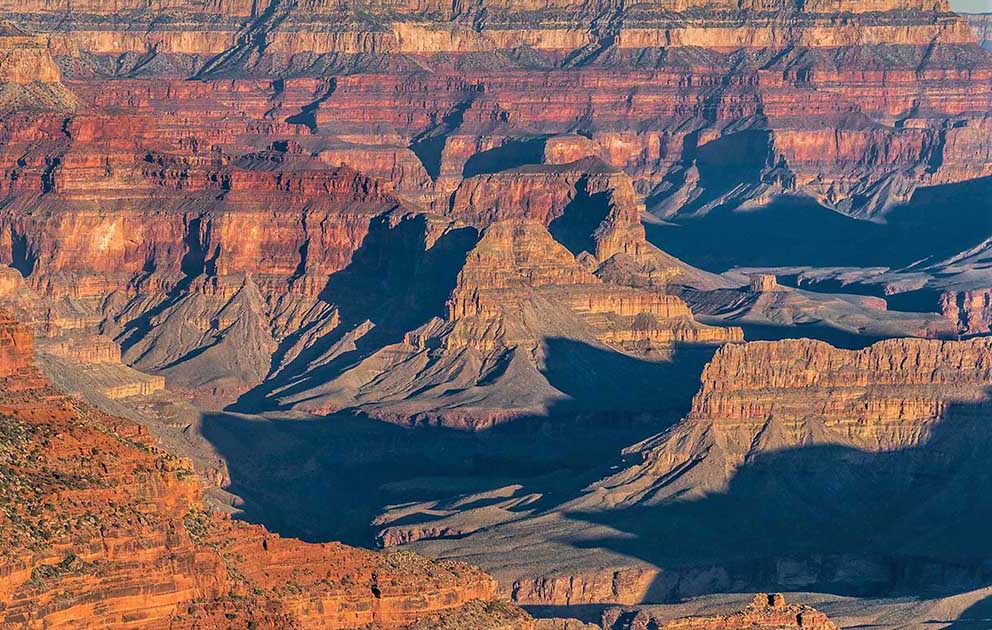An impact crater is an approximately circular depression in the surface of a planet, moon or other solid body in the Solar System, formed by the hypervelocity impact of a smaller body with the surface.
In contrast to volcanic craters, which result from explosion or internal collapse, impact craters typically have raised rims and floors that are lower in elevation than the surrounding terrain. Impact craters range from small, simple, bowl-shaped depressions to large, complex, multi-ringed impact basins. Meteor Crater is perhaps the best-known example of a small impact crater on the Earth.
Impact craters are the dominant geographic features on many solid Solar System objects including the Moon, Mercury, Callisto, Ganymede and most small moons and asteroids. On other planets and moons that experience more active surface geological processes, such as Earth, Venus, Mars, Europa, Io and Titan, visible impact craters are less common because they become eroded, buried or transformed by tectonics over time. Where such processes have destroyed most of the original crater topography, the terms impact structure or astrobleme are more commonly used. In early literature, before the significance of impact cratering was widely recognized, the terms crypto-explosion or crypto-volcanic structure were often used to describe what are now recognized as impact-related features on Earth.
The cratering records of very old surfaces, such as Mercury, the Moon, and the southern highlands of Mars, record a period of intense early bombardment in the inner Solar System around 3.9 billion years ago. Since that time, the rate of crater production on Earth has been considerably lower, but it is appreciable nonetheless; Earth experiences from one to three impacts large enough to produce a 20 km diameter crater about once every million years on average. This indicates that there should be far more relatively young craters on the planet than have been discovered so far. Read more

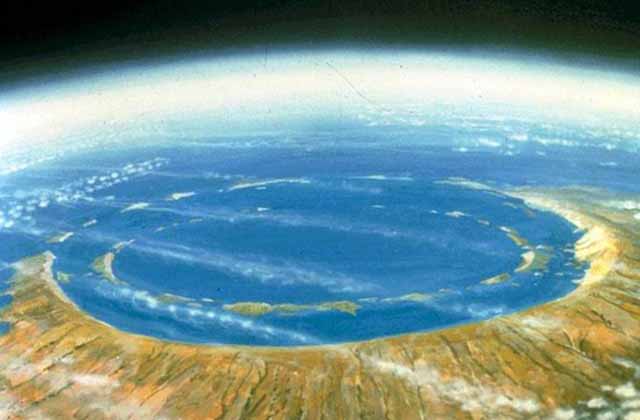
About 65 million years ago at the boundary between the Cretaceous (the last geological period of the Mesozoic) and the Tertiary eras, a large asteroid came rushing out of space at a velocity of more than 25 km per second and impacted the Earth at the tip of the Yucatan platform. It is believed to have caused the extinction of the dinosaurs and other species.
The Chicxulub crater is an impact crater buried underneath the Yucatan Peninsula in Mexico. Its center is offshore, but the crater is named after the onshore community of Chicxulub Pueblo. It was formed slightly over 65 million years ago when a large asteroid, about ten kilometers (six miles) in diameter, struck Earth. The crater is estimated to be 200 kilometers (120 miles) in diameter and 20 kilometers (12 miles) in depth. It is the second largest confirmed impact structure on Earth, and the only one whose peak ring is intact and directly accessible for scientific research.
The date of the impact coincides with the Cretaceous-Paleogene boundary (commonly known as the K-Pg or K-T boundary). It is now widely accepted that the devastation and climate disruption resulting from the impact was the primary cause of the Cretaceous-Paleogene extinction event, a mass extinction of 75% of plant and animal species on Earth, including all non-avian dinosaurs.


Impact crater that killed the dinosaurs may not have been the only one
BBC - August 17, 2022
Was Earth bombarded on that terrible day by more than one space rock? The discovery of what seems to be a second impact crater on the other side of the Atlantic, of a very similar age, is raising these questions. It's not as big as the one we know at Chicxulub in Mexico, but still it speaks to a catastrophic event. Dubbed Nadir Crater, the new feature sits more than 300m below the seabed, some 400km off the coast of Guinea, west Africa.
Meteor Crater is the spectacular result of a collision that rocked the American Southwest approximately 50,000 years ago with the energy of more than 20 million tons of TNT. It is the largest impact crater yet discovered in the United States.
Meteor Crater, or Barringer Crater, is about 37 mi (60 km) east of Flagstaff and 18 mi (29 km) west of Winslow in the desert of northern Arizona, United States. The site had several earlier names, and fragments of the meteorite are officially called the Canyon Diablo Meteorite, after the adjacent Canyon Diablo.
The crater was created about during the Pleistocene epoch, when the local climate on the Colorado Plateau was much cooler and damper. The area was an open grassland dotted with woodlands inhabited by mammoths and giant ground sloths. Continue reading
List of impact structures on Earth
Other Impacts Craters in the Universe
World's Largest 'Modern' Crater Found Hiding in Plain Sight in China Science Alert - November 17, 2025
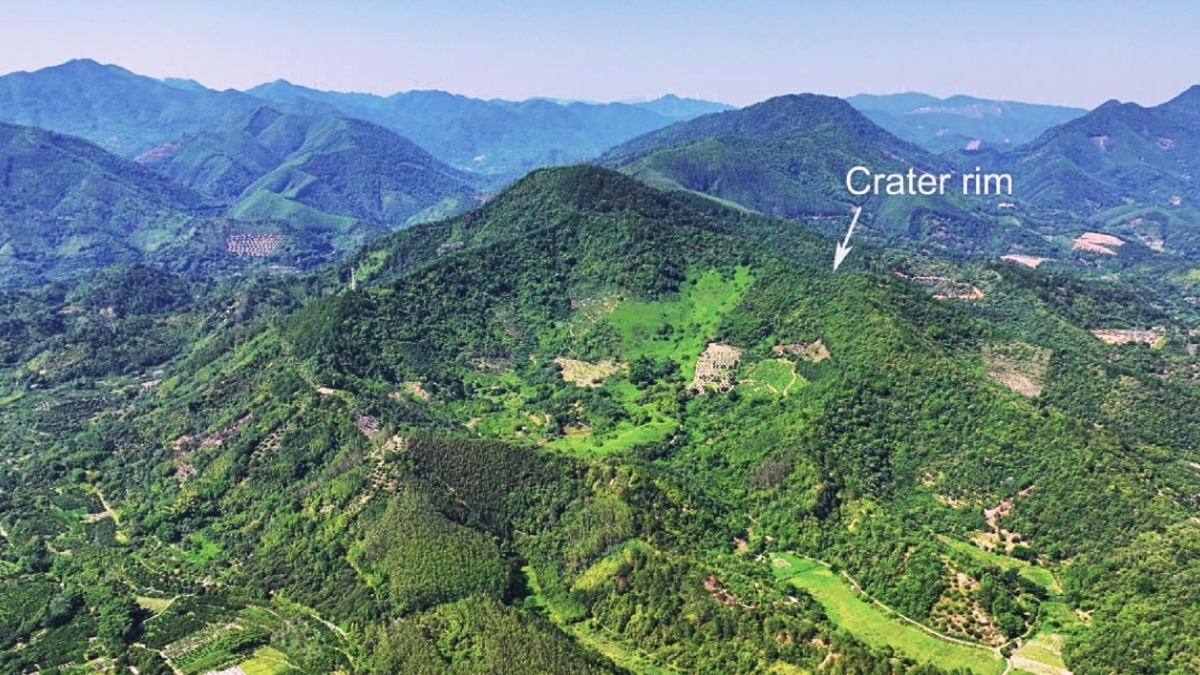
Nestled on a hillside in Guangdong Province near Zhaoqing City, the Jinlin crater managed to hide in plain sight until researchers identified it as an impact structure. Only about 200 confirmed impact craters exist worldwide, making each discovery scientifically valuable. But this one stands out for its exceptional size and youth.
Unusual Crater in The North Sea Result of a Cosmic Collision, Study Confirms Science Alert - September 30, 2025
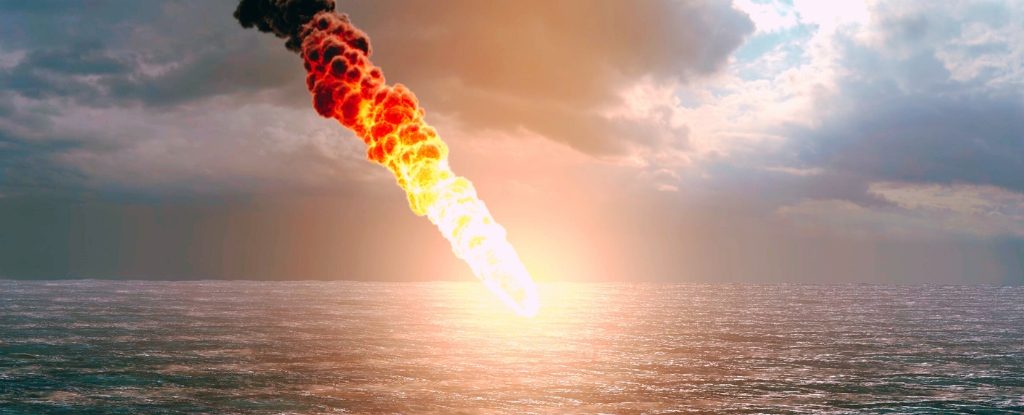
Sometime in the Middle Eocene epoch, nearly 50 million years ago, a large object hurtled through Earth's atmosphere, crashing into the North Sea between what's now Britain and northwestern Europe. The impact formed a crater 1 kilometer (about half a mile) deep and 3 kilometers wide. A plume of debris and water blasted skyward before falling back down, triggering a monster tsunami. These are the findings of a new study, in which researchers attempt to settle a decades-long dispute over the origins of the Silverpit Crater, now buried 700 meters beneath the seabed about 130 kilometers off the southeastern coast of Great Britain.
Origins of Siberia's Mysterious Craters May Lie Deeper Than We Thought Science Alert - September 22, 2025
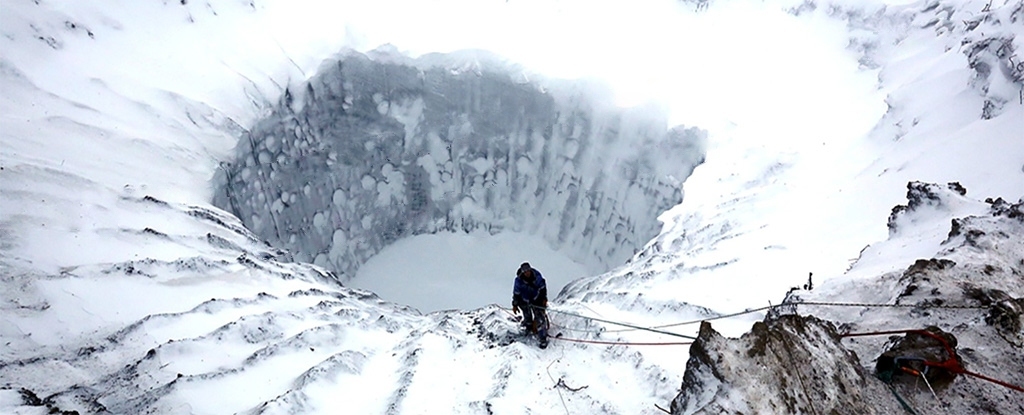
More than a decade after mysterious holes were first discovered in the permafrost of Western Siberia, scientists are still putting forward new theories – from gas explosions to meteor impacts - on how they are formed. A team of geoscientists from the University of Oslo, led by Helge Hellevang, has now thrown their hat into the icy ring, putting forth a new model that could explain why these holes formed exclusively on the Yamal and Gydan peninsulas and not in other Arctic permafrost regions.
Record Discovery: Impact Crater in Australia's Outback Oldest by a Billion Years Science Alert - March 7, 2025

We have discovered the oldest meteorite impact crater on Earth, in the very heart of the Pilbara region of Western Australia. The crater formed more than 3.5 billion years ago, making it the oldest known by more than a billion years.
Earth from space: Wandering sand dunes circle gigantic 'eye' sculpted by ancient city-killer meteor in the Sahara Live Science - November 26, 2024
This 2013 astronaut photo shows a giant eye-shaped impact crater in the Sahara Desert that is slowly being circled by migrating sand dunes, helping researchers track how far these dunes can move over time.
Siberia's 'gateway to the underworld' is growing a staggering amount each year Live Science - May 20, 2024


The "gateway to the underworld," a huge crater in Siberia's permafrost, is growing by 35 million cubic feet (1 million cubic meters) every year as the frozen ground melts, according to a new study. The crater, officially known as the Batagay crater or megaslump, features a rounded cliff face that was first spotted on satellite images in 1991 after a section of hillside collapsed in the Yana Uplands of northern Yakutia in Russia.
This collapse exposed layers of permafrost within the remaining portion of the hillside that have been frozen for up to 650,000 years - the oldest permafrost in Siberia and second oldest in the world. New research suggests that the Batagay megaslump's cliff face, or headwall, is retreating at a rate of 40 feet (12 meters) per year due to permafrost thaw. The collapsed section of the hillside, which fell to 180 feet (55 m) below the headwall, is also melting rapidly and sinking as a result.
World's first mountaintop impact crater discovered in northeastern China Live Science - September 15, 2023
A nearly mile-wide (1.6 kilometer) divot in a Chinese mountaintop is actually an impact crater from a long-ago meteorite landing. The newly discovered crater, located in northeastern China not far from the North Korean border, is the first confirmed mountaintop crater on Earth. Researchers aren't sure when the impact happened, but it left a circular depression and split the mountaintop into two peaks, known as Front Baijifeng and Rear Baijifeng. The mountain peaks are littered with rock fragments known locally as "celestial stone," which turns out to be a scientifically accurate moniker.
Earth Oldest Impact Craters Are Disappearing Science Alert - August 2, 2023
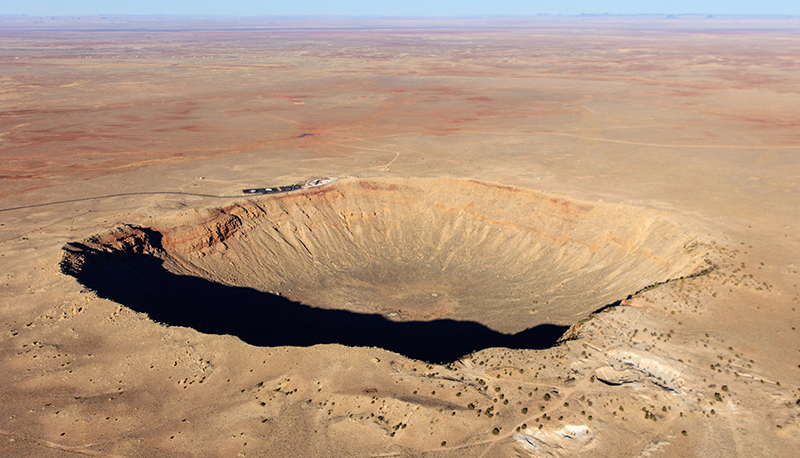
The earliest impact scars from asteroids that bombarded Earth's surface may be lost forever to the ravages of time. According to a new analysis, there's a reason scientists have been unable to find any craters older than about 2 billion years. The constant erosion and geological processes on Earth have likely erased them from the surface completely, leaving behind only the barest traces, such as high-pressure minerals and melted rock.
